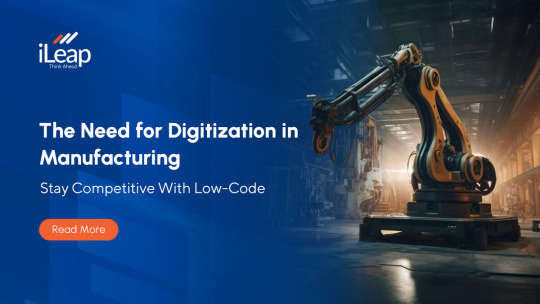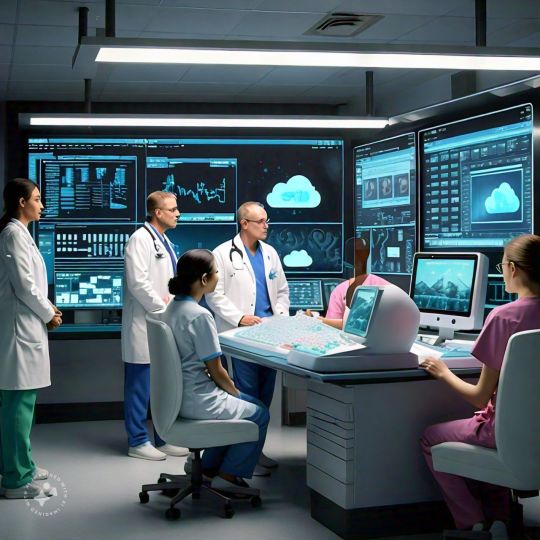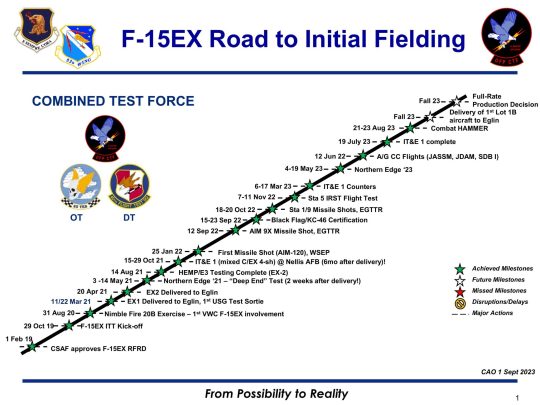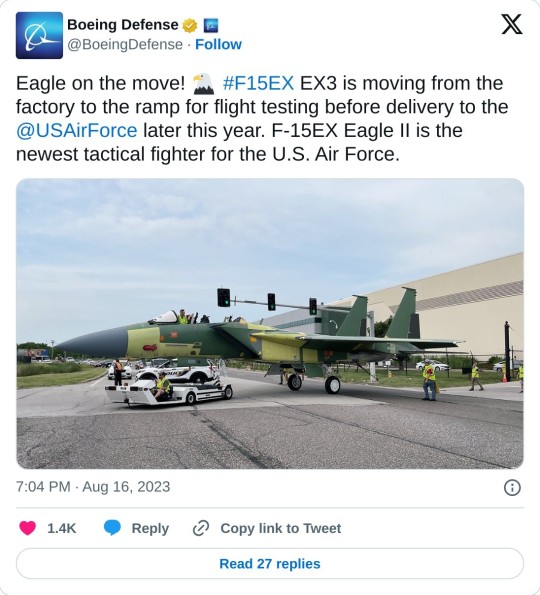#legacy IoT
Explore tagged Tumblr posts
Text
#IoT device examples#IoT device examples in 2025#Internet of Things device examples#Internet of things#industrial iot#medical iot devices#legacy iot#Smart home gadgets#Wearable technology#Industrial IoT sensors#Medical IoT devices
0 notes
Text
0 notes
Text
Digital Transformation Services
Your Switch to a Digital Future – Digital Transformation Consulting Services
Being a leading name amongst Digital Transformation Company and Service providers, Enterprise Mobility has been handholding enterprises on their Digital Transformation journeys for two decades now
#enterprise mobility#digital transformation#enterprise mobility management#enterprise mobility service#Mobility Strategy and Consulting#Custom Enterprise Mobile App#digital transformation service#digital transformation consulting#digital transformation company#Digital Transformation Consultation#Legacy Modernization#Legacy Modernization Services#Legacy App Modernization#Legacy Mainframe#Legacy Application Modernization#Legacy Application Maintenance#Legacy Application Management#App Modernization Services#Enterprise Application Modernization#IoT Development
1 note
·
View note
Text
Web to Mobile: Building Seamless Apps with .NET"
.NET is a effective, flexible, and open-supply developer platform created with the aid of Microsoft. It enables the creation of a huge range of applications—from computing device to cellular, net, cloud, gaming, and IoT. Over the years, .NET has evolved substantially and has become one of the maximum extensively used frameworks inside the software improvement enterprise.
Dot Net Programming Language

A Brief History of .NET
The .NET Framework become first delivered through Microsoft in the early 2000s. The original cause turned into to offer a steady item-oriented programming surroundings regardless of whether code became stored and finished locally, remotely, or via the internet.
Over time, Microsoft developed .NET right into a cross-platform, open-supply framework. In 2016, Microsoft launched .NET Core, a modular, high-performance, cross-platform implementation of .NET. In 2020, the company unified all its .NET technologies beneath one umbrella with the discharge of .NET five, and later persisted with .NET 6, .NET 7, and past.
Today, the unified platform is actually called .NET, and it allows builders to build apps for Windows, macOS, Linux, iOS, Android, and greater using a single codebase.
Key Features of .NET
1. Cross-Platform Development
One of the maximum tremendous features of present day .NET (publish .NET Core) is its ability to run on a couple of platforms. Developers can construct and deploy apps on Windows, Linux, and macOS with out enhancing their codebases.
2. Multiple Language Support
.NET supports numerous programming languages, together with:
C# – the maximum extensively used language in .NET development
F# – a purposeful-first programming language
Visual Basic – an smooth-to-analyze language, regularly used in legacy programs
This multilingual capability allows developers to pick out the nice language for their precise use cases.
3. Extensive Library and Framework Support
.NET offers a comprehensive base magnificence library (BCL) and framework libraries that aid the whole lot from record studying/writing to XML manipulation, statistics get entry to, cryptography, and extra.
Four. ASP.NET for Web Development
ASP.NET is a part of the .NET platform specially designed for net improvement. ASP.NET Core, the cross-platform model, permits builders to build scalable internet APIs, dynamic web sites, and actual-time packages the usage of technology like SignalR.
5. Rich Development Environment
.NET integrates seamlessly with Visual Studio, one of the most function-wealthy integrated development environments (IDEs) available. Visual Studio offers capabilities together with IntelliSense, debugging tools, challenge templates, and code refactoring.
6. Performance and Scalability
.NET is thought for high performance and scalability, especially with its guide for asynchronous programming using async/wait for and its Just-In-Time (JIT) compilation.
7. Secure and Reliable
.NET presents sturdy safety features, including code get entry to security, role-based protection, and cryptography training. It also handles reminiscence management thru rubbish series, minimizing reminiscence leaks.
Common Applications Built with .NET
1. Web Applications
With ASP.NET Core, builders can create cutting-edge, scalable internet programs and RESTful APIs. Razor Pages and Blazor are technology within ASP.NET Core that help server-facet and purchaser-facet rendering.
2. Desktop Applications
Using Windows Forms or Windows Presentation Foundation (WPF), builders can build conventional computing device applications. .NET MAUI (Multi-platform App UI) now extends this functionality to move-platform computer and cellular programs.
3. Mobile Applications
Through Xamarin (now incorporated into .NET MAUI), developers can create native mobile applications for Android and iOS the usage of C#.
4. Cloud-Based Applications
.NET is nicely-acceptable for cloud development, in particular with Microsoft Azure. Developers can build cloud-local apps, serverless capabilities, and containerized microservices the usage of Docker and Kubernetes.
5. IoT Applications
.NET helps Internet of Things (IoT) development, allowing builders to construct applications that engage with sensors and gadgets.
6. Games
With the Unity sport engine, which helps C#, developers can use .NET languages to create 2D, three-D, AR, and VR games.
Components of .NET
1. .NET SDK
The Software Development Kit includes everything had to build and run .NET packages: compilers, libraries, and command-line tools.
2. CLR (Common Language Runtime)
It handles reminiscence control, exception managing, and rubbish collection.
Three. BCL (Base Class Library)
The BCL offers center functionalities including collections, record I/O, records kinds, and extra.
4. NuGet
NuGet is the package manager for .NET. It lets in builders to install, manage, and share libraries without problems.
Modern .NET Versions
.NET five (2020): Unified the .NET platform (Core + Framework)
.NET 7 (2022): Further overall performance enhancements and more desirable APIs
.NET 8 (2023): Continued attention on cloud-native, cellular, and web improvement
Advantages of Using .NET
Cross-platform assist – construct as soon as, run everywhere
Large developer network – widespread sources, libraries, and frameworks
Robust tooling – especially with Visual Studio and JetBrains Rider
Active improvement – backed by using Microsoft and open-source community
Challenges and Considerations
Learning curve – particularly for beginners due to its giant atmosphere
Legacy framework – older .NET Framework tasks aren't like minded with .NET Core or more recent variations without migration
Platform differences – sure APIs or libraries might also behave in a different way throughout operating systems
Getting Started with .NET
To begin growing with .NET:
Install the .NET SDK from the legitimate .NET internet site.
Create a new project: Use the dotnet new command or Visual Studio templates.
Write code: Develop your logic the usage of C#, F#, or VB.NET.
#btech students#bca students#online programming courses#offline institute programming courses#regular colleges university#Dot Net Programming Language
2 notes
·
View notes
Text
Building Safer Cities: How Advanced Switchgear Is Powering the Future

Switchgear refers to the combination of electrical disconnect switches, fuses, and circuit breakers used to control, protect, and isolate electrical equipment. In simple words: it’s the shield that protects the power network from overloads, faults, and blackouts.
Without high-quality switchgear, cities would face:
· Frequent power failures
· Increased risk of electrical fires
· Equipment damage
· Unsafe environments for residents and businesses
In today’s urban landscape, switchgear isn’t just an accessory — it’s a critical lifeline for energy security and public safety.
How Advanced Switchgear is Shaping Safer Cities
Thanks to major technological advancements, switchgear is no longer static and reactive. Modern switchgear systems are smart, dynamic, and preventative. Here’s how they are transforming cities:
1. Real-Time Monitoring and Fault Detection
Smart switchgear comes equipped with IoT sensors and digital monitoring systems that detect faults in real time. Instead of waiting for a catastrophic failure, the system identifies weak points early — enabling quick, preventive maintenance.
Impact: Reduced blackouts, faster repair times, safer living and working environments.
2. Automated Shutdowns During Emergencies
In critical events like fires, short circuits, or system overloads, automated switchgear can instantly isolate the affected section. This targeted shutdown prevents the spread of danger and keeps the rest of the city powered.
👉 Impact: Enhanced public safety, minimized risk of widespread outages.
3. Supporting Renewable Energy Integration
As cities shift toward renewable energy sources (solar, wind, hydro), modern switchgear is designed to handle these variable inputs seamlessly. It balances load fluctuations and ensures grid stability, even when energy production varies hour by hour.
👉 Impact: Cleaner cities without sacrificing reliability.
4. Enhanced Energy Efficiency
Advanced switchgear minimizes energy losses during transmission and distribution. With features like optimized load management and energy analytics, cities can operate their power grids more sustainably and economically.
👉 Impact: Lower energy costs, greener urban spaces.
Why Upgrading Switchgear is Essential for the Cities of Tomorrow
The future city will be:
· More populated
· More digitalized
· More energy-demanding
Legacy power systems cannot keep up with this growth. Old switchgear is more vulnerable to faults, inefficiency, and even cyberattacks. Modern, advanced switchgear not only provides higher protection but also future-proofs cities against evolving challenges.
Investing in advanced switchgear means investing in:
· Public safety
· Economic stability
· Environmental responsibility
· Smart infrastructure development
Conclusion: Powering a Safer, Smarter Future
As we envision smarter, greener, and safer cities, we must pay attention to the systems that keep the lights on — and keep people safe. Advanced switchgear stands at the front line of this transformation, quietly ensuring that progress doesn’t come at the cost of safety.
Whether you’re an urban planner, an electrical engineer, or a business owner — prioritizing the right switchgear solutions is key to building cities ready for the challenges of tomorrow.
Looking for world-class switchgear products and accessories? Al Taqwa Electrical and Building Materials offers cutting-edge solutions trusted by industries across the world.
#electrical#electrical equipment#electrical supplies#building#building materials#oman#muscat#switchgear
3 notes
·
View notes
Text
Cloud Migration and Integration A Strategic Shift Toward Scalable Infrastructure
In today’s digital-first business environment, cloud computing is no longer just a technology trend—it’s a foundational element of enterprise strategy. As organizations seek greater agility, scalability, and cost-efficiency, cloud migration and integration have emerged as critical initiatives. However, transitioning to the cloud is far from a lift-and-shift process; it requires thoughtful planning, seamless integration, and a clear understanding of long-term business objectives.

What is Cloud Migration and Why Does It Matter
Cloud migration involves moving data, applications, and IT processes from on-premises infrastructure or legacy systems to cloud-based environments. These environments can be public, private, or hybrid, depending on the organization’s needs. While the move offers benefits such as cost reduction, improved performance, and on-demand scalability, the true value lies in enabling innovation through flexible technology infrastructure.
But migration is only the first step. Cloud integration—the process of configuring applications and systems to work cohesively within the cloud—is equally essential. Without integration, businesses may face operational silos, inconsistent data flows, and reduced productivity, undermining the very purpose of migration.
Key Considerations in Cloud Migration
A successful cloud migration depends on more than just transferring workloads. It involves analyzing current infrastructure, defining the desired end state, and selecting the right cloud model and service providers. Critical factors include:
Application suitability: Not all applications are cloud-ready. Some legacy systems may need reengineering or replacement.
Data governance: Moving sensitive data to the cloud demands a strong focus on compliance, encryption, and access controls.
Downtime management: Minimizing disruption during the migration process is essential for business continuity.
Security architecture: Ensuring that cloud environments are resilient against threats is a non-negotiable part of migration planning.
Integration for a Unified Ecosystem
Once in the cloud, seamless integration becomes the linchpin for realizing operational efficiency. Organizations must ensure that their applications, databases, and platforms communicate efficiently in real time. This includes integrating APIs, aligning with enterprise resource planning (ERP) systems, and enabling data exchange across multiple cloud platforms.
Hybrid and Multi-Cloud Strategies
Cloud strategies have evolved beyond single-provider solutions. Many organizations now adopt hybrid (combining on-premise and cloud infrastructure) or multi-cloud (using services from multiple cloud providers) approaches. While this enhances flexibility and avoids vendor lock-in, it adds complexity to integration and governance.
To address this, organizations need a unified approach to infrastructure orchestration, monitoring, and automation. Strong integration frameworks and middleware platforms become essential in stitching together a cohesive IT ecosystem.
Long-Term Value of Cloud Transformation
Cloud migration and integration are not one-time projects—they are ongoing transformations. As business needs evolve, cloud infrastructure must adapt through continuous optimization, cost management, and performance tuning.
Moreover, integrated cloud environments serve as the foundation for emerging technologies like artificial intelligence, data analytics, and Internet of Things (IoT), enabling businesses to innovate faster and more efficiently.
By treating cloud migration and integration as strategic investments rather than tactical moves, organizations position themselves to stay competitive, agile, and future-ready.
#CloudMigration#CloudIntegration#DigitalTransformation#HybridCloud#MultiCloud#CloudComputing#InfrastructureModernization#ITStrategy#BusinessContinuity
2 notes
·
View notes
Text
The Road Ahead – Navigating the Future of the Automotive Industry
🌍 Market Overview
The Global automotive industry Market Size is evolving rapidly, driven by technological advancements, sustainability initiatives, and changing consumer preferences. Automakers are embracing electric vehicles (EVs), autonomous technology, and digital transformation to stay ahead.
Download a Free Sample : https://rb.gy/iwh4in
📈 Growth Drivers
✅ Electrification – Rise in EV adoption due to sustainability goals and government incentives. ✅ Autonomous Vehicles – Investments in self-driving technology from major players like Tesla, Waymo, and GM. ✅ Connectivity & IoT – Smart features, in-car AI, and enhanced safety tech. ✅ Urbanization & Mobility Services – Growth of ride-sharing and subscription-based vehicle models.
⚠️ Key Challenges & Factors
🚧 Chip Shortages – Semiconductor supply chain disruptions affecting production. 🚧 Regulatory Hurdles – Stricter emissions policies worldwide. 🚧 Consumer Preferences – Shift towards SUVs and electric mobility. 🚧 Raw Material Costs – Fluctuations in lithium, nickel, and other EV battery components.
🔥 Emerging Trends
🔹 EV Market Boom – Tesla, Rivian, and legacy automakers expanding electric fleets. 🔹 Hydrogen Fuel Cell Tech – Toyota & Hyundai leading innovations. 🔹 Sustainable Manufacturing – Recycling initiatives & carbon-neutral plants. 🔹 Software-Defined Vehicles – Over-the-air (OTA) updates & AI-driven enhancements.
Related Urls :
https://www.sphericalinsights.com/reports/automotive-blockchain-market https://www.sphericalinsights.com/reports/china-halal-logistics-market
#AutomotiveIndustry 🚗 |#EVRevolution ⚡ |#CarTrends 🚘 |#FutureOfMobility 🌍 |#AutoTech 🔧 |#ElectricVehicles 🔋 |#AutonomousCars 🤖 |#GreenMobility 🌱 |#CarManufacturing 🏭 |#SmartCars 📡 |#SustainableTransport 🚀 |#AutoInnovation 🔥 |#NextGenVehicles 🚙 |#AutomotiveMarket 📈 |#MobilitySolutions 🚦
2 notes
·
View notes
Text

The Future of Decentralized Gaming has arrived, Don't believe me? Then dive into the essence of what I envision for this revolutionary Idea. Help bring it into fruition by reading, analyzing, and understanding the conceptual framework I've created. The beginning of the future is now, Read My blogs below, where I bridge the current Web2 centralized legacy gaming systems into a Decentralized Web3 ecosystem, Enabling Gamers to be incentivized, monetized, and recognized for their gaming data-which only will be in their Control.
Welcome to QorTrola Gaming, where #Web3, #Blockchain, #Crypto, #Decentralization, #DePIN, #Data, #Gaming, #BlockchainGaming, #Monetization, #Hardware and #IoT all combine to create a dedicated system for gamers to control and sell their gaming data as they please.
Check it out 👇
https://qortrolagaming.wordpress.com/
#Web3#Blockchain#Crypto#Decentralization#DePIN#Data#Gaming#BlockchainGaming#Monetization#Hardware and IoT
12 notes
·
View notes
Text
The Need for Digitization in Manufacturing : Stay Competitive With Low-Code

Industry 4.0 is transforming manufacturing with smart factories, automation, and digital integration. Technologies like the Internet of Things (IoT), artificial intelligence (AI), and low-code applications are enabling manufacturers to streamline processes and develop customized solutions quickly. Low-code platforms empower manufacturers to adapt to global demands, driving efficiency and innovation.
Previously, cross-border transactions in manufacturing faced delays due to bureaucracy, complex payment mechanisms, and inconsistent regulations. These challenges led to inefficiency and increased costs. However, Industry 4.0 technologies, such as digital payments, smart contracts, and logistics tracking, have simplified international transactions, improving procurement processes.
Low-code applications are key in this transformation, enabling rapid development of secure solutions for payments, customs clearance, and regulatory compliance. These platforms reduce complexity, enhance transparency, and ensure cost-effective, secure global supply chains. This shift aligns with the demands of a connected global economy, enhancing productivity and competitiveness.
The Need for Digitization in Manufacturing
Digitization has become crucial for manufacturing to stay competitive, with new technologies and the need for automation driving the sector’s transformation. Key features include ERP systems for centralized management of inventory, finances, and operations; digital supply chain tools for visibility and disruption prediction; real-time data for performance monitoring; sustainability tracking; and IoT/RFID for better tracking, accuracy, and reduced waste.
Low-code applications play a pivotal role in digitization by enabling rapid development of tailored solutions for inventory management, supply chain optimization, and performance analytics. These platforms streamline processes, reduce manual work, and enhance agility, helping manufacturers implement digital transformations quickly and cost-effectively.
Upgrading Manufacturing Capabilities in the Era of Industry 4.0 with Low-code Solutions
Low-code applications are becoming essential for digital transformation in manufacturing, addressing operational challenges while managing increased production demands and a shortage of skilled staff. These platforms enable manufacturers to quickly develop tailored applications without needing specialized coding expertise, fostering faster, more flexible operations. By streamlining processes and aligning with modern consumer demands, low-code technology helps bridge the skills gap, empowering manufacturers to stay competitive and seize new opportunities in a rapidly evolving market.
Low-code Technology Benefits for Modern Industries
As digital transformation becomes increasingly crucial for manufacturing, many enterprises in the sector face challenges with outdated processes, legacy system limitations, customization challenges, and inadequate resources. Low-code applications offer a compelling solution, enabling manufacturers to streamline operations by eliminating paper-based processes and automating workflows across functions such as Production, Sales, Logistics, Finance, Procurement, Quality Assurance, Human Resources, Supply Chain, and IT Operations. Additionally, low-code platforms enhance compliance and safety standards through built-in automated tools.
These platforms deliver impressive results, including over 70% improvement in productivity and close to 95% improvement in output quality in specific scenarios. This is particularly evident in automating complex processes like order fulfillment—from receiving customer orders to delivering finished products and managing invoicing with customers. Use cases also include automating inventory management, enhancing predictive maintenance with real-time data, and optimizing supply chain operations. Low-code solutions make it easier for manufacturers to implement changes quickly, boosting agility and reducing time-to-market while improving overall operational efficiency.
Conclusion
Low-code platforms are driving digital transformation in manufacturing, addressing sector-specific challenges in industries like automotive, aviation, and oil & gas. With Industry 4.0 and smart manufacturing, iLeap’s low-code platform helps integrate IoT, advanced analytics, and end-to-end automation, leading to optimized workflows and real-time decision-making. By adopting agile development, manufacturers can quickly adapt to new technologies and market demands, making iLeap the ideal partner for digital transformation. Unlock the potential of Industry 4.0 with iLeap and turn challenges into growth opportunities.
3 notes
·
View notes
Text
Harnessing technology: The future of precision agriculture
By Vyankatesh Sharma, CEO and Founder, NEEL-INITIATIVE
In today’s fast-paced digital age, agriculture is no longer confined to traditional tools and methods. The industry is witnessing an unprecedented transformation, driven by cutting-edge technology, advanced artificial intelligence (AI), and innovative precision farming solutions. At NEEL-INITIATIVE, we are proud to lead this evolution, empowering farmers worldwide with high-tech agricultural machinery that redefines farming as a sustainable and rewarding lifestyle.
As the CEO and founder of NEEL-INITIATIVE, I am passionate about leveraging technology to revolutionize agriculture. Our mission is clear: to enhance productivity, reduce resource wastage, and provide farmers with a lifestyle worth living through state-of-the-art solutions tailored for modern needs.
The Agricultural Revolution
The agriculture industry is at the crossroads of change, with global challenges such as climate change, resource scarcity, and a rapidly growing population demanding innovative solutions. By 2050, the world will need to produce 70% more food to sustain nearly 10 billion people. Traditional farming techniques cannot meet this demand alone.
This is where precision agriculture comes in—a game-changing approach that uses technology to maximize efficiency, enhance crop yields, and promote sustainable farming practices. Precision agriculture not only optimizes farming inputs but also ensures that resources like water, fertilizers, and pesticides are used judiciously.
The Role of Technology in Precision Farming
At NEEL-INITIATIVE, we harness the power of AI-driven technologies, machine learning, and IoT-enabled agricultural machinery to deliver intelligent solutions.
Here are the key ways in which our technology is revolutionizing farming:
1. AI-Enhanced Agricultural Machinery
Our AI-powered machines are designed to make farming smarter and more efficient. From automated tractors to smart harvesters, these machines collect and analyze data in real time, offering insights that drive better decisions. They assess soil conditions, monitor crop health, and even predict the best time for planting and harvesting.
2. Data Analytics for Smart Farming
Data is the lifeblood of modern agriculture. Using drones, satellite imaging, and IoT sensors, our systems gather precise data on variables like soil fertility, moisture levels, and crop performance. This data is processed by AI algorithms, providing farmers with actionable insights to optimize every aspect of their operations.
3. Sustainable Resource Management
Sustainability is a core value at NEEL-INITIATIVE. Our solutions help conserve resources by employing advanced precision irrigation systems, which deliver the exact amount of water needed. By minimizing waste, farmers can cut costs and reduce their environmental footprint.
4. Predictive Analytics for Risk Mitigation
Through predictive models powered by machine learning, we offer farmers tools to anticipate weather changes, pest infestations, and disease outbreaks. This proactive approach helps farmers mitigate risks and improve crop resilience.
5. Blockchain for Food Traceability
Consumers today are demanding greater transparency in the food supply chain. Our technology incorporates blockchain solutions that provide end-to-end traceability, ensuring that every step of the production process is accountable and reliable.
NEEL-INITIATIVE: Leading the Future of Farming
At NEEL-INITIATIVE, we are not just building machines; we are building a legacy of innovation and empowerment. Our high-tech machinery is specifically engineered to address the unique challenges faced by farmers.
When I founded NEEL-INITIATIVE, my vision was to create a company that goes beyond selling products—we provide transformative artificial intelligence solutions that integrate seamlessly into the lives of people. Our systems are designed to enhance efficiency, promote sustainability, and ensure maximum profitability for farmers.
Why Choose NEEL-INITIATIVE?
Advanced AI Technology: Our agricultural machines are powered by cutting-edge artificial intelligence that continually learns and improves.
Ease of Use: Our tools are user-friendly, ensuring that farmers of all skill levels can adopt them without hassle.
Cost Efficiency: We design scalable solutions that fit farms of all sizes, making advanced technology affordable for small-scale farmers.
Training and Support: We offer comprehensive training programs to help farmers maximize the potential of our solutions.
A Lifestyle Worth Living
At NEEL-INITIATIVE, our tagline, "Providing a lifestyle worth living," reflects our dedication to enriching farmers' lives. Our mission is not just to improve agricultural practices but to create a future where farming is fulfilling, efficient, and environmentally responsible.
Our solutions enable farmers to:
Monitor fields remotely using mobile apps.
Optimize resources to cut costs and increase yields.
Reduce labor-intensive tasks through automation.
Make data-driven decisions for long-term success.
Overcoming Challenges
While the benefits of precision agriculture are undeniable, the road to adoption comes with challenges, including:
Lack of Awareness: Educating farmers about the potential of precision agriculture is a critical task.
Digital Divide: Bridging the gap in access to digital infrastructure is essential for widespread adoption.
At NEEL-INITIATIVE, we address these challenges by providing:
Flexible Financing Options: Helping farmers access the tools they need without financial strain.
Educational Outreach: Conducting workshops and training sessions to showcase the advantages of precision farming.
Accessible Solutions: Designing equipment that works efficiently even in areas with limited connectivity.
The Future of Agriculture
The future of agriculture lies in embracing technology and innovation. Precision agriculture is no longer a luxury—it is a necessity. By integrating AI, IoT, and big data analytics into farming, we can address the challenges of feeding a growing population while preserving the planet’s resources.
At NEEL-INITIATIVE, we are proud to be at the helm of this transformation. Our advanced tools and machinery are paving the way for a brighter, more sustainable future in agriculture.
Join the Revolution
As the CEO of NEEL-INITIATIVE, I invite farmers, technologists, and stakeholders to join us in shaping the future of farming. Together, we can create an ecosystem where technology and nature coexist harmoniously.
The future of agriculture is here, and at NEEL-INITIATIVE, we’re building it one innovation at a time.
Vyankatesh Sharma CEO and Founder, NEEL-INITIATIVE
#artificial intelligence#startup#agriculture#neelinitiative#vyankatesh sharma#economy#robust#technology#farming#sustainablefarming#NEEL-INITIATIVE
2 notes
·
View notes
Text
#iot connected dashcams#IoT dashcams#iot fleet management#fleet management system#legacy iot#fleet management solutions#real-time monitoring#IoT connectivity benefits
0 notes
Text
Revolutionizing Healthcare: The Role of Cloud Computing in Modern Healthcare Technologies
In today’s digital era, cloud computing is transforming industries, and healthcare is no exception. The integration of cloud computing healthcare technologies is reshaping patient care, medical research, and healthcare management. Let’s explore how cloud computing is revolutionizing healthcare and the benefits it brings.

What is Cloud Computing in Healthcare?
Cloud computing in healthcare refers to the use of remote servers to store, manage, and process healthcare data, rather than relying on local servers or personal computers. This technology allows healthcare organizations to access vast amounts of data, collaborate with other institutions, and scale operations seamlessly.
Download PDF Brochure
Key Benefits of Cloud Computing in Healthcare
Enhanced Data Storage and Accessibility Cloud technology allows healthcare providers to store massive volumes of patient data, including medical records, images, and test results, securely. Clinicians can access this data from anywhere, ensuring that patient information is available for timely decision-making.
Improved Collaboration Cloud-based healthcare platforms enable easy sharing of patient data between healthcare providers, specialists, and labs. This facilitates better collaboration and more accurate diagnoses and treatment plans, especially in multi-disciplinary cases.
Cost Efficiency The cloud reduces the need for expensive hardware, software, and in-house IT teams. Healthcare providers only pay for the resources they use, making it a cost-effective solution. Additionally, the scalability of cloud systems ensures they can grow as healthcare organizations expand.
Better Data Security Protecting sensitive patient information is critical in healthcare. Cloud computing providers invest heavily in data security measures such as encryption, multi-factor authentication, and regular audits, ensuring compliance with regulatory standards like HIPAA.
Telemedicine and Remote Patient Monitoring Cloud computing powers telemedicine platforms, allowing patients to consult with doctors virtually, from the comfort of their homes. It also enables remote patient monitoring, where doctors can track patients' health metrics in real time, improving outcomes for chronic conditions.
Advanced Data Analytics The cloud supports the integration of advanced data analytics tools, including artificial intelligence (AI) and machine learning (ML), which can analyze large datasets to predict health trends, track disease outbreaks, and personalize treatment plans based on individual patient data.
Use Cases of Cloud Computing in Healthcare
Electronic Health Records (EHRs): Cloud-based EHRs allow healthcare providers to access and update patient records instantly, improving the quality of care.
Genomics and Precision Medicine: Cloud computing accelerates the processing of large datasets in genomics, supporting research and development in personalized medicine.
Hospital Information Systems (HIS): Cloud-powered HIS streamline hospital operations, from patient admissions to billing, improving efficiency.
Challenges in Cloud Computing for Healthcare
Despite its numerous benefits, there are challenges to implementing cloud computing in healthcare. These include:
Data Privacy Concerns: Although cloud providers offer robust security measures, healthcare organizations must ensure their systems are compliant with local and international regulations.
Integration with Legacy Systems: Many healthcare institutions still rely on outdated technology, making it challenging to integrate cloud solutions smoothly.
Staff Training: Healthcare professionals need adequate training to use cloud-based systems effectively.
Request Sample Pages
The Future of Cloud Computing in Healthcare
The future of healthcare will be increasingly cloud-centric. With advancements in AI, IoT, and big data analytics, cloud computing will continue to drive innovations in personalized medicine, population health management, and patient care. Additionally, with the growing trend of wearable devices and health apps, cloud computing will play a crucial role in integrating and managing data from diverse sources to provide a comprehensive view of patient health.
Conclusion
Cloud computing is not just a trend in healthcare; it is a transformative force driving the industry towards more efficient, secure, and patient-centric care. As healthcare organizations continue to adopt cloud technologies, we can expect to see improved patient outcomes, lower costs, and innovations that were once thought impossible.
Embracing cloud computing in healthcare is essential for any organization aiming to stay at the forefront of medical advancements and patient care.
Content Source:
2 notes
·
View notes
Text
Textile Manufacturing Companies | Oswal Group

In the bustling industrial landscape of Ludhiana, where the clang of machinery and the hum of ambition merge, one name stands out as a beacon of excellence: The Oswal Group of Companies. Founded on a vision to redefine the textile industry in Ludhiana, Oswal Group’s journey from inception to industry leader is nothing short of inspiring.
The Genesis: The Oswal Group’s foray into the textile industry dates back to the 1960s when the visionary entrepreneur, Late Shri Rattan Chand Oswal, laid the foundation stone of what would become a textile empire. With a keen eye for opportunities and a steadfast commitment to quality, Oswal ventured into yarn production, setting the stage for the group’s meteoric rise.
Excelling in Ludhiana’s Textile Hub: Ludhiana boasts a rich heritage in textiles. In such a competitive landscape, Oswal Group didn’t just survive; it thrived. Through strategic investments in state-of-the-art technology, a relentless focus on innovation, and nurturing a skilled workforce, the Oswal Group carved a niche for itself.
The group’s vertical integration, from spinning mills to garment manufacturing, enabled streamlined operations and superior quality control. This holistic approach not only ensured consistency in product standards but also bolstered Oswal’s reputation as a reliable textile partner globally.
Moreover, Oswal Group’s commitment to sustainability has been commendable. Embracing eco-friendly practices, optimizing resource utilization, and adhering to stringent environmental regulations have not only reduced the ecological footprint but also enhanced brand credibility.
Evolution in the Textile Industry: As the textile industry in Ludhiana evolves in the digital age, Oswal Group is poised to embrace the winds of change. Embracing automation, leveraging data analytics for predictive maintenance, and integrating IoT (Internet of Things) for smart manufacturing are avenues the group can explore to enhance efficiency and productivity further.
Furthermore, investing in research and development to explore alternative fibers and sustainable manufacturing processes can bolster Oswal Group’s competitive edge. With growing consumer consciousness towards ethical sourcing and eco-friendly products, tapping into this market segment can unlock new growth avenues.
Moreover, expanding the group’s global footprint through strategic alliances and partnerships can diversify market exposure and mitigate risks associated with geographical dependencies. Collaborating with international brands for co-branded collections or joint ventures can not only enhance brand visibility but also facilitate knowledge exchange and technological advancements.
Additionally, nurturing talent through skill development programs and fostering a culture of innovation can fuel Oswal Group’s evolution. Encouraging intrapreneurship and empowering employees to think beyond conventional boundaries can lead to breakthroughs in product design, manufacturing processes, and business models.
In the tapestry of Ludhiana’s textile industry, Oswal Group’s story shines as a testament to perseverance, innovation, and resilience. From humble beginnings to scaling new heights of success, the group has not only excelled but also redefined the textile industry’s standards.
As Oswal Group embarks on the next phase of its journey, the roadmap is clear: embrace technology, foster sustainability, and nurture talent. By staying true to its core values while adapting to emerging trends, Oswal Group is poised to not just survive but thrive in the dynamic landscape of the textile industry. With each thread woven with precision and passion, the Oswal legacy continues to inspire generations, shaping the future of Ludhiana’s textile industry and beyond.
2 notes
·
View notes
Text
Overcoming Challenges in Data Integration: Insights from Consulting Experts
Data integration for enterprises can take longer due to technological, financial, and time constraints. As a result, modifying data strategies to mitigate risks like incompatibility between many tools or budget overruns is crucial. Companies must also prepare for new compliance requirements to ensure ethical data operations. This post will explore such challenges in data integration while listing valuable insights from consulting experts in this domain.
What is Data Integration?
Data integration merges data from disparate origins and presents it to maximize comprehension, consolidation, and summarization effectiveness. Integrated data views rely on data ingestion, preparation, and advanced insight extraction. It also streamlines the data operations services across regulatory report creation, helpdesks, and 360-degree client life cycle management.
All data integration strategies involve the extract, transform, and load (ETL) pipelines regardless of business units or target industries. At the same time, the scope of planning and quality assurance in each process varies due to domain-specific data classification factors.
For instance, the accounting departments must handle extensive numerical data while interpreting legal and organizational requirements for transparency. On the other hand, production engineering and design professionals will use visualizations to improve goods or service packages. Accordingly, accountants will use unique tools distinct from engineers’ software.
Later, the leaders might want a comprehensive overview of the synergy between these departments. Therefore, they must determine efficient data integration strategies. The data will move between several programs, carrying forward many updates throughout a project’s progression based on those roadmaps.
Overcoming the Challenges in Data Integration Using Insights from Consulting Experts
1| Data Quality Hurdles
Linking, consolidating, and updating data from several sources will exponentially increase the quality-related threats. For instance, consider multimedia assets from social networks or unreliable news outlets. They can help your secondary market research and social listening initiatives. However, you want to verify the authenticity of gathered intelligence to avoid inaccurate data ingestion.
Evaluating relevance, freshness, and consistency is essential to data quality assurance from creation to archival. So, corporations have started leveraging data lifecycle management to boost dataset integrity, helping make integration less of a hassle.
Insights:
Most consulting experts suggest developing ecosystems that check and recheck quality metrics at each stage of a data integration lifecycle. Moreover, they recommend maintaining periodic data backups with robust version control mechanisms. Doing so will help quality preservation efforts if errors arise after a feature update or a malicious third party is likely to break the system using malware.
2| Networking and Computing Infrastructure Problems
Legacy hardware and software often introduce bottlenecks, hurting data integration’s efficiency. Modern integration strategies demand more capable IT infrastructure due to the breakthroughs like the internet of things (IoT), 5G networks, big data, and large language models. If a company fails to procure the necessary resources, it must postpone data integration.
Technologies integral to capturing, storing, checking, sorting, transferring, and encrypting data imply significant electricity consumption. Besides, a stable networking environment with adequate governance implementations enables secure data transactions. The underlying computing infrastructure is not immune to physical damage or downtime risks due to maintenance mishaps.
What Consulting Experts Say:
Enterprises must invest in reliable, scalable, and efficient hardware-software infrastructure. This will benefit them by providing a stable working environment and allowing employees to witness productivity improvements. Upgrading IT systems will also enhance cybersecurity, lowering the risk of zero-day vulnerabilities.
3| Data Availability Delays
Governments, global firms, educational institutions, hospitals, and import-export organizations have a vast network of regional offices. These offices must also interact with suppliers, contractors, and customers. Due to the scale of stakeholder engagement, reports concerning office-level performance and inventory might arrive late.
Underproductive employees, tech troubleshooting, slow internet connectivity, and a poor data compression ratio will make data sourcing, updating, and analyzing inefficient. As a result, a data integration officer must address time-consuming activities through strategic resource allocation. If left unaddressed, delays in data delivery will adversely affect conflict resolution and customer service.
Expert Insights:
Train your employees to maximize their potential and reduce data acquisition, categorization, and transformation delays. Additionally, you will want to embrace automation through artificial intelligence (AI) applications. Find methods to increase the data compression ratio and accelerate encryption-decryption processing cycles. These measures will help accomplish near-real-time data integration objectives.
4| Vendor Lock-ins
A vendor lock-in results from inconvenience and restrictions when a client wants to switch to another service provider or toolkit. Although data integration platforms claim they celebrate the ease of migrating databases with competitors, they might covertly create vendor lock-ins.
For instance, some data sourcing and sorting ecosystems might limit the supported formats for bulk export commands. Others will use misleading methods to design the graphical user interface (GUI) of account deletion and data export features. They involve too many alerts or generate corrupt export files.
Practical Insights:
Combining multiple proprietary and open-source software tools offers the best cost optimization opportunities. When you select a data vendor, audit the tools the willing data integration providers use to deliver their assistance. Do they use a completely proprietary system based on an unknown file format unsupported by other platforms?
Finally, you must check all the data import, export, and bulk transfer options in vendors’ documentation. After you check a data firm’s current client base, track its online ratings and scan for red flags indicating potential vendor lock-ins.
5| Data-Related Ethical and Legal Liabilities
Confidentiality of investor communication and stakeholders’ privacy rights are two components of legal risk exposure due to enterprise data integration. Additionally, brands must interpret industry guidelines and regional directives for regulatory disclosures.
They must comply with laws concerning personally identifiable information (PII) about employees and customers. Otherwise, they will attract policymakers’ ire, and customers will lose faith in brands that do not comply with the laws of their countries.
Insights:
Consulting experts recommend collaborating with regional legal teams and global governance compliance specialists. After all, mitigating legal risks can help increase business resilience.
Improved compliance ratings have also benefited several brands wanting to be attractive to impact investors. Meanwhile, customers demanding ethical data operations at business establishments love supporting brands with an exceptional governance culture.
Conclusion
Most brands need specialists' help to develop consolidated data views during reporting because they have flawed data integration strategies. So, they require trustworthy insights from reputed consulting experts with a proven track record of overcoming challenges in data integration. The selected data partners must excel at ETL implementation, governance compliance, and data quality management (DQM).
The corporate world champions data-centric business development. Understandably, the need for scalable data integration reflects the increased stakeholder awareness regarding the importance of connecting disparate data sources. With transparent, fast, and accurate data, organizations will enhance their competitive edge amid this intense digital transformation race.
3 notes
·
View notes
Text

Boeing F-15EX completes first phase of integrated testing
Fernando Valduga By Fernando Valduga 09/14/2023 - 11:00am in Military
The F-15EX recently completed the first phase of its initial operational test and evaluation (IT&E) program with the launch of an AGM-158 joint air-surface missile (JASSM), the highest-range air-to-ground missile in the U.S. Department of Defense combat inventory.
The JASSM has a range of about 230 miles, according to a U.S. Air Force information leaflet.
The F-15EX is the first U.S. Air Force aircraft to undergo an integrated program of tests and evaluations. The combination of the IOT&E and DOT&E effort is unique to the program, in that the existing test data of the legacy F-15C/D and F-15E can be compared with the data from the new EX, with a special focus on the new features unique to EX, such as its advanced processor and fly-by-wire control system. The EX also has more weapon stations than the F-15E, allowing it to carry more war material.

In November 2022 tests, the F-15EX demonstrated that it can carry up to 12 AIM-120 AMRAAM air-to-air missiles.
“Proving the ability of the F-15EX to employ three JASSMs after witnessing the validation of the air-to-air domain paper with a load of 12 AMRAAM that it can fire is incredible,” said Major Calvin Conner, commander of the F-15 division of the 85º Test and Evaluation Squadron. "The firepower that four F-15EX jets bring to a combatant commander is tremendous."

JASSM was launched during the Combat Hammer exercise, held at Hill Air Base in Utah in August. The shot was performed simultaneously with the 53ª Wing Weapon System Evaluation Program, which required a collaborative effort between the 83º and 86º Fighter Weapon Squadrons. The details of the shot - the targets, ranges, etc. - are confidential, but have been strongly evaluated, from the construction of the weapon to the use and analysis of the missile routes, to the target.
"This test shows innovation and results in the rapid delivery of state-of-the-art capabilities to the fighter. That's exactly what our fighters need from us," said Mark Sears, vice president of Boeing Fighters. "The F-15EX is the most affordable and immediate way to renew the capacity and upgrade the capabilities of the U.S. Air Force and we are ready to deliver additional aircraft later this year."

With Phase I of the F-15EX IT&E completed, the data from this phase will be analyzed for the final report to guide a total production decision determination in the coming months.

The U.S. Air Force plans to buy 104 F-15EX fighters, although this number could rise to 110 if some changes to the 2024 fiscal year defense bill are enacted.

Boeing begins delivering fighters with combat capability to U.S. Air Force squads later this year.
Tags: Military AviationBoeingF-15EXUSAF - United States Air Force / U.S. Air Force
Sharing
tweet
Fernando Valduga
Fernando Valduga
Aviation photographer and pilot since 1992, he has participated in several events and air operations, such as Cruzex, AirVenture, Daytona Airshow and FIDAE. He has work published in specialized aviation magazines in Brazil and abroad. Uses Canon equipment during his photographic work throughout the world of aviation.
Related news
F-35A Lightning II fighter of the Republic of Korea Air Force (RoKAF). (Photo: Liz Lutz / Lockheed Martin)
MILITARY
Approved the purchase of 25 more F-35 fighters by South Korea
14/09/2023 - 08:37
MILITARY
Airbus delivers first C295 aircraft to India
13/09/2023 - 19:18
HELICOPTERS
Lockheed Martin offers Black Hawk to request new medium helicopter from the United Kingdom
13/09/2023 - 18:59
Arrival of the first B-52 at the Boeing unit in San Antonio, Texas, for AESA radar installation.
MILITARY
Raytheon delivers first AESA radar to Boeing for B-52 modernization
09/13/2023 - 16:00
The high-altitude, long-lived RQ-4D Phoenix unmanned aircraft are launched and controlled from Sigonella Air Base in Sicily. (Photo: NATO)
MILITARY
UKRAINE: NATO Drone Unit provided hundreds of flight hours collecting critical information
09/13/2023 - 14:00
BRAZIL
IMAGES: How the FAB is acting in support of those affected by the flood in RS
09/13/2023 - 1:00 PM
10 notes
·
View notes
Text
What is the difference between LoRa and LoRaWAN?
Introduction:
LoRaWAN serves as the communication protocol connecting the LoRa signal (which carries sensor data) to the respective application(s). To simplify, think of LoRa as the radio signal transporting the data, while LoRaWAN acts as the governing framework that dictates how this data travels and communicates within the network.

What is LoRa?
LoRa, short for Long Range, is a wireless technology known for its extended range and energy-efficient characteristics. It operates within unlicensed wireless frequencies, similar to how Wi-Fi utilizes the unregulated 2.4 GHz and 5 GHz bands. The specific frequency employed by LoRa varies depending on the geographic location of the deployment. For instance, in North America, LoRa operates in the 915 MHz band, while in Europe, it utilizes the 868 MHz band and in India it is 865 MHz to 867 MHz.
It is crucial to be aware of the legally permitted frequencies for LoRa deployments in each respective location. In terms of its communication range, LoRa can transmit data up to a distance of 10 kilometers in ideal conditions with a clear line of sight.
Low Power Wide Area (LPWA) technology can be categorized into two main types. On one hand, there's cellular LPWA, which utilizes mobile networks. Examples of cellular LPWA technologies include Narrowband IoT (NB-IoT) and Long Term Machine Type Communications (LTE-M). On the other hand, there's non-cellular LPWA like LoRa, which disseminates data by dividing it into encoded packets and transmitting them across various frequency channels and data rates.
What is LoRaWAN?
LoRaWAN is a network protocol that serves as the bridge between the LoRa signal, which carries sensor data, and the applications that use this data. In simpler terms, LoRa represents the radio signal responsible for transmitting the data, while LoRaWAN is the communication protocol that manages and defines how this data is transmitted across the network.
LoRaWAN offers several valuable advantages, including low power consumption, extensive coverage range, and cost-effective connectivity for devices that don't require high data transfer speeds. It's an excellent choice when cellular connectivity is too expensive or Wi-Fi coverage is unavailable. Some of the most compelling use cases for LoRaWAN include:
Agriculture: LoRaWAN's long-range capabilities provide reliable connectivity for rural applications where high data transfer rates are not necessary, making it ideal for agricultural applications. LoRaWAN sensors for agriculture are used for cattle management, soli monitoring, and temperature monitoring.
Asset Tracking and Logistics: LoRaWAN supports cost-effective location tracking of assets, with optimized battery life, making it a practical choice for asset management and logistics.
Smart Metering: LoRaWAN's sensors have the ability to reach even in underground utility locations makes it a suitable choice for smart metering applications.
Smart Homes: LoRaWAN can penetrate obstacles like walls and supports battery-powered devices with low data consumption, making it an attractive connectivity option for smart home applications.LoRaWAN sensors for smart homes are used for Air quality monitoring, water quality monitoring, and temperature & humidity monitoring.
Healthcare: The low power consumption, affordability, and reliability of LoRa technology make it suitable for connected health applications. IoT solutions based on LoRa hardware can monitor high-risk patients or systems around the clock, ensuring comprehensive health and medical safety management.LoRaWAN Gateways and sensors enhance production practices, enable efficient tracking and monitoring of shipments, and facilitate the development of cutting-edge medications.
Industrial Applications: LoRa-enabled devices and sensors play a crucial role in the transformation of industrial IoT operations like mentioned above. They digitize legacy processes and equipment, leading to increased profits, lower costs, and enhanced efficiency. These devices provide real-time data for predictive maintenance, machine health monitoring, reduced downtime, and more.
3 notes
·
View notes